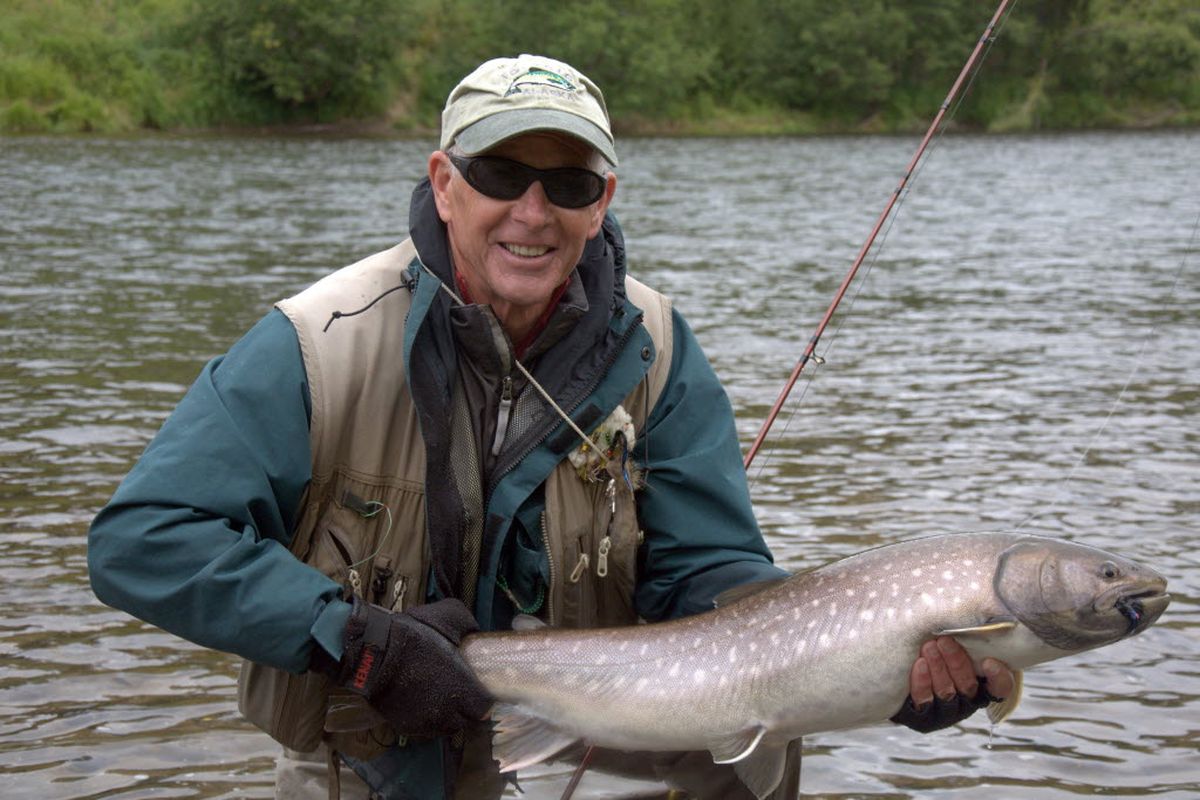Far-flung fly fishing in Russia

Don Childress of Sandpoint fondly recalls being among the first Westerners to cast a fly in Russia’s remote Kamchatka Peninsula steelhead and trout streams, where the smallest rainbow of the three-week trip weighed 6 pounds.
Two decades later, another member of Panhandle Trout Unlimited returned from the region’s Zhupanova River and found the magic and the lunkers are still there.
“It’s the first fly-fishing travel trip that actually lived up to my expectations,” said Ron Mamajek of Sagle, who said costs for a September week of angling total about $12,000.
Kamchatka – with 127 volcanoes, 22 of them active – is in far-eastern Russia across the Bering Sea west of Alaska. Roughly the size of California, it has only about 200 miles of roads compared with 172,000 miles of roads and streets in America’s third largest state.
Access to fishing in Kamchatka continues to be by helicopter, boat or foot. The sparsely populated landscape is much as it was in the early 1990s when Childress joined one of the first post-perestroika groups allowed to explore the waters for sportfishing.
“Being on the front-end of fishing undocumented rivers is a rare opportunity,” Childress said. His first trip, organized by the Wild Salmon Center, collected scale samples and specimens of steelhead that run into rivers in fall and are adapted to enduring the bitter-cold winters under ice before spawning in the spring.
“I landed several 25-pounders,” he said.
The riverside camps were primitive and the food was basic. “We complained a little about getting tired of borscht,” he recalled. “The next day the guides went out and shot some ducks, and we had duck in our borscht. Then they killed some rainbows and we had trout in our borscht.”
Childress has returned to Kamchatka three times as recently as 2013, especially to skate mouse patterns for huge rainbows.
Word has spread about the world-class rainbow trout fisheries. He’s noticed the rapid growth in Russian outfitters and Western booking partners eager to do business with them. A sportfishing industry has established in what is largely a vast wilderness.
“But it’s still like Alaska was 30 or more years ago,” he said. “That’s the appeal to me. It’s regulated by the access. The only fishermen on a river are in the group that flies in with you.”
Kamchatka holds thousands of spring creeks and rivers where about a third of the world’s Pacific salmon spawn.
“Interest in sportfishing could help save the best of these fisheries in the future,” Childress said. “Russia is looking at damming some of these rivers.”
Food, camps and guiding skills have improved, usually with a Western guide or two mixed with Russian guides. A few lodges are operating and wilderness float trips are a wild experience – guides have a bear-deterrent dog on every boat.
A direct flight from Alaska to Kamchatka, revived in 2012 by Yakutia Airlines, has been a boon to sportfishing .
“The four-hour flight made the deal for me,” said Mamajek, noting that Childress’s first trip involved three days of travel through Moscow and 19 time zones.
In August, Mamajek jetted 1,960 miles directly from Anchorage to Petropavlovsk (anglers call it Petro), which is 4,200 miles across Siberia from Moscow.
“There isn’t much cultural exposure there,” he said. “It’s pretty stark. You’re fairly quickly flown to the fishing camp by MI-8 helicopter – no seat belts and the gear piled in the middle among the passengers.”
His dreams of hooking up with submarine-size rainbows on a 7-weight rod were soon realized.
“I had to walk across mats of pink salmon carcasses to fish the Zhupanova,” he said, clearly in awe of the biomass. “Stripping streamers worked best most of the time,” he said, noting that the river isn’t known for producing high numbers of fish, but rather a high percentage of trophy fish.
He worked out a discount deal to stay two weeks instead of one, enabling him to do a float trip as well as fishing from a lodge by jet-boat and also out of a permanent camp. “You have to be willing to walk to some streams and bunk in small rooms with several anglers,” he said.
“We averaged about 5-6 big rainbows over 20 inches a day, and we caught kundzha – Siberian spotted char – that can run up to 15 pounds. Sometimes the Dolly Varden were so thick they were a nuisance.”
“Biggest kundzha I caught was 37 inches long in 2011,” Childress said.
“The rivers were gorgeous,” Mamajek said. “Sometimes the guides would walk the boat down the stream so we could fish without the oars moving.”
Childress said he’s fished about 20 rivers in Alaska, 15 of them on self-guided trips. “One of the big differences for trout is that in Russia I’m fishing with mouse patterns and streamers rather than nymphng with beads for a week or two in Alaska,” he said.
While the weather, eagles and bugs were much as you’d expect in Alaska, the fish were not, Childress said: “When you fish a popular Alaska trout stream like the Kvichak River, every trout has scars on its mouth. In Russia, the trout looked pristine.”
Kamchatka trips are mostly a fishing experience, but the men both enjoyed small insights into the culture.
“Coffee drinkers should bring their own,” Mamajek said. “They don’t know anything about it. And we were warned not to give vodka to the guides.”
“Occasionally we were served raw salmon eggs right out of the fish for an appetizer,” Childress said. “The guides loved it.”
“One of our Russian guides was a former prison guard,” Mamajek said. “I was told I didn’t want to know more about him than that.”
• More information about fishing Russia’s Kamchatka Peninsula is available at theflyshop.com. See a video clip at vimeo.com/3074182.